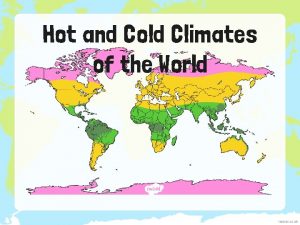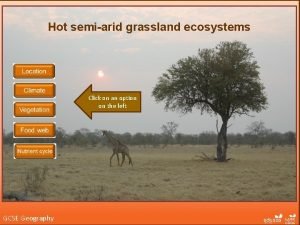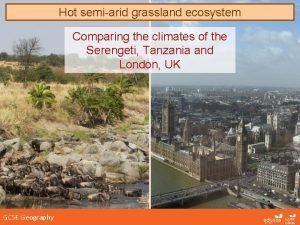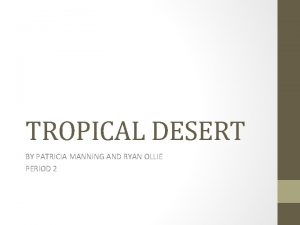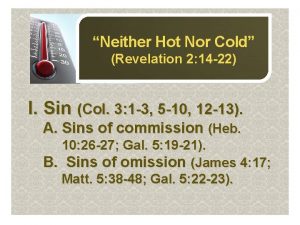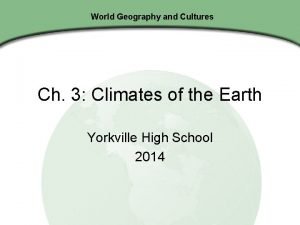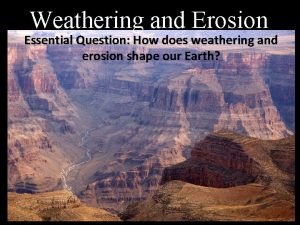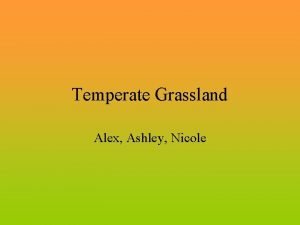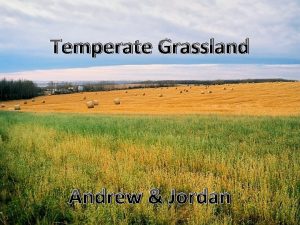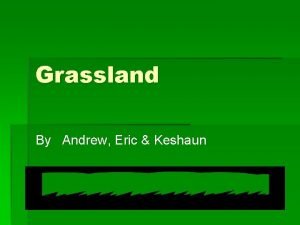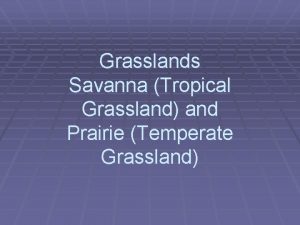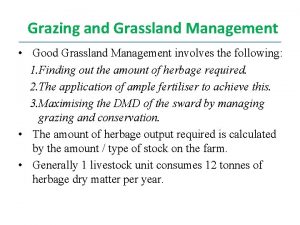Hot semiarid grassland ecosystem Comparing the climates of













- Slides: 13

Hot semi-arid grassland ecosystem Comparing the climates of the Serengeti, Tanzania and London, UK GCSE Geography

Hot semi-arid grassland ecosystem Study the climate graphs for the Serengeti National Park and London and decide if the following statements are true or false. London Serengeti National Park GCSE Geography

Hot semi-arid grassland ecosystem GCSE Geography

Hot semi-arid grassland ecosystem Answer True or False or click below for the next question 1. The maximum temperature in the Serengeti is always higher than the maximum temperature in London. GCSE Geography

Hot semi-arid grassland ecosystem Answer True or False or click below for the next question 2. The minimum temperature in the Serengeti is always higher than the minimum temperature in London. GCSE Geography

Hot semi-arid grassland ecosystem Temperature range = 11 – 13 o. C Temperature range = 4 – 8 o. C Answer True or False or click below for the next question 3. The temperature range is always greater in the Serengeti compared to London. GCSE Geography

Hot semi-arid grassland ecosystem Despite the fact that there is some rainfall, the ‘dry season’ lasts from June to September. The amount of rainfall is lower at this time of year. 4. The Serengeti has a ‘dry season’, whereas London does not. GCSE Geography Answer True or False or click below for the next question

Hot semi-arid grassland ecosystem Annual rainfall = 980 mm Annual rainfall = 595 mm Answer True or False or click below for the next question 5. The Serengeti receives less rainfall than London in a year. GCSE Geography

Hot semi-arid grassland ecosystem Annual rainfall = 980 mm Annual rainfall = 595 mm Answer True or False or click below for the next question 6. In both the Serengeti and London, the amount of rainfall increases as the temperature increases. GCSE Geography

Hot semi-arid grassland ecosystem Annual rainfall = 980 mm 55 mm 7. The same amount of rain falls in both places in September. GCSE Geography Annual rainfall = 595 mm Answer True or False 50 mm or click below for the next question

Hot semi-arid grassland ecosystem 130 mm 8. The Serengeti has the same amount of rain in April as London has in the first three months of the year together. GCSE Geography Answer True or False or click below for the next question

Hot semi-arid grassland ecosystem Annual rainfall = 980 mm Less than 49. 5 mm 9. The average rainfall per month for London is 49. 5 mm. There are only three months when the Serengeti has a lower rainfall figure than this. GCSE Geography Annual rainfall = 595 mm Answer Average rainfall is True or 595 / 12 = 49. 5 mm per month False or click below for the next question

Hot semi-arid grassland ecosystem The minimum temperature which occurs most often is 16 o. C Minimum temperature never reaches 16 o. C Answer True or False 10. In the Serengeti, the minimum temperature mode (modal minimum temperature) is 16 o. C. GCSE Geography
 Climate types brainpop
Climate types brainpop Hot and cold climates
Hot and cold climates Grassland ecosystem
Grassland ecosystem Hot semi arid grassland
Hot semi arid grassland Hot semi arid grassland climate
Hot semi arid grassland climate Food web examples
Food web examples White hot vs red hot temperature
White hot vs red hot temperature Hot working of metals is carried out
Hot working of metals is carried out Perbedaan hot lava dan hot lava volcano
Perbedaan hot lava dan hot lava volcano Hot nor hot
Hot nor hot Thermal floors in colombia
Thermal floors in colombia Chapter 3 climates of the earth answers
Chapter 3 climates of the earth answers Mechanical weathering is more rapid in warm wet climates
Mechanical weathering is more rapid in warm wet climates What determines a region's climate
What determines a region's climate

